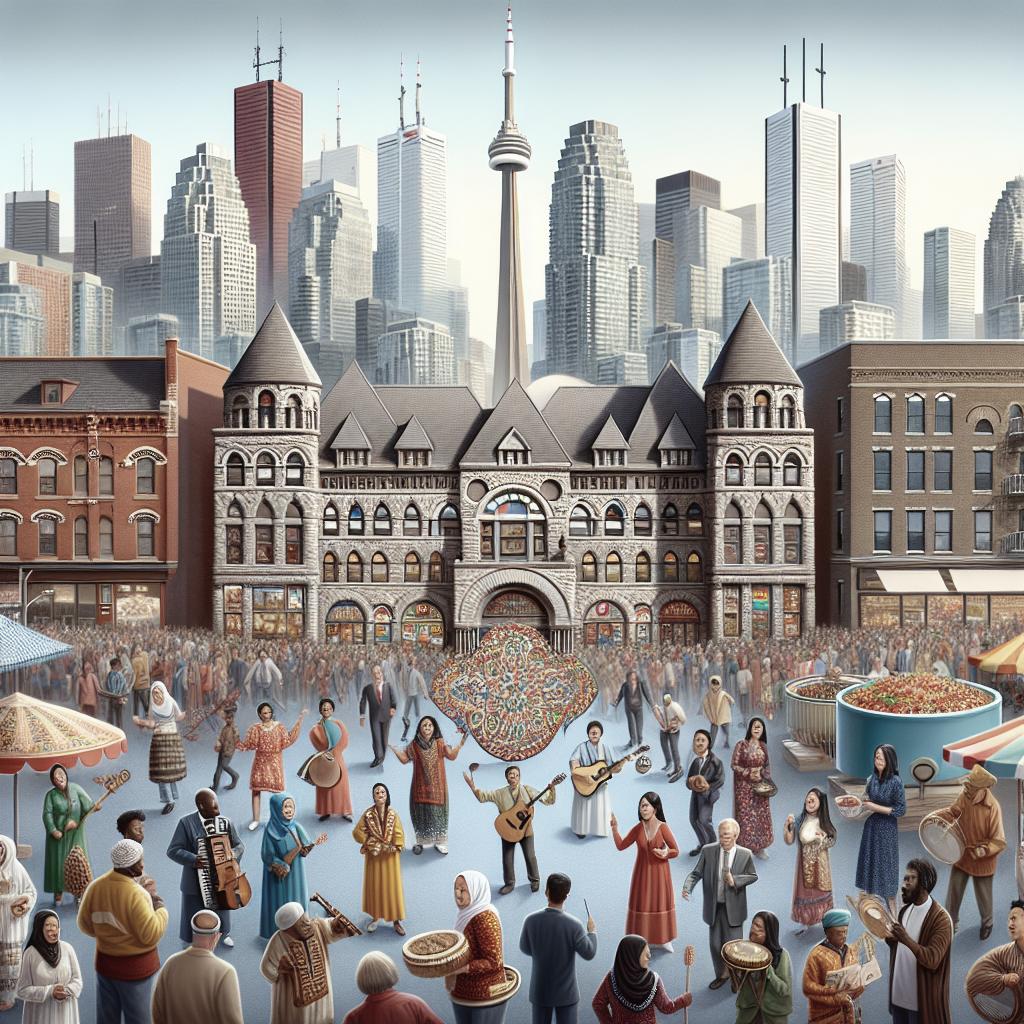“`html
Exploring Toronto’s Historic Districts
Nestled among the modern skyscrapers and bustling streets of Toronto are stories from a bygone era, whispering through the city’s historic districts. This blog post will take you on a journey to some of Toronto’s most notable historic sites, showcasing the city’s rich past and cultural heritage, which often gets overshadowed by its contemporary flair. From the architectural elegance of the Fairmont Royal York Hotel to the storied cobblestones of St. Lawrence Market, explore Toronto’s history and learn more about these iconic locations. Along the way, we’ll delve into the unique history behind sites like Toronto’s First Post Office and the serene Toronto Sculpture Garden. Enjoy this exploration of the fusion between past and present in one of Canada’s most vibrant cities.
Fairmont Royal York Hotel
The Fairmont Royal York Hotel stands as a testament to Toronto’s evolution throughout the years. Originally opened in 1929, this grand railway hotel was once the tallest building in the British Empire. It has hosted countless dignitaries and celebrities, preserving its status as a symbol of luxury and heritage. The hotel’s rich history is matched by its stunning architectural features, including ornate decorations and an iconic ballroom that transports visitors back to the golden age of travel.
A stay or visit to the Fairmont Royal York not only provides a glimpse into architectural grandeur but is also an experience in hospitality. The hotel’s history is intricately linked with the development of the railway and the accompanying economic growth, marking it as a key player in Toronto’s narrative. Whether you’re lodging or just exploring, the artifacts and historical memorabilia displayed throughout its halls offer an informative and intriguing insight into its past.
First Parliament Site
The First Parliament Site is an essential chapter in Toronto’s history book. Located at what is now Front and Parliament Streets, this site was the home of Upper Canada’s first parliament buildings. Established in 1797, the original structures bore witness to the fledgling government during its turbulent early years. Unfortunately, these buildings did not survive the torches of the War of 1812 but their significance remains in the underpinnings of Canadian governance.
Efforts to preserve and commemorate the First Parliament Site continue today. Archaeological findings have been key in reconstructing its story, and modern projects aim to build a fitting tribute to this heritage alongside a learning centre. For history enthusiasts and casual visitors alike, visiting this site offers a thought-provoking glimpse into the political and social beginnings of both Toronto and Canada at large.
Hockey Hall of Fame
The Hockey Hall of Fame is a shrine to one of Canada’s most beloved sports, situated in a beautifully restored building in downtown Toronto. Beyond the impressive collection of hockey memorabilia and interactive exhibits, the Hall itself is a piece of history. Originally the Bank of Montreal, this building now houses treasures like the Stanley Cup, drawing fans and history buffs alike.
Visitors to the Hockey Hall of Fame can indulge in the evolution of the game, from its grassroots origins to the international phenomenon it is today. Rich with history, not only of hockey but of the architectural renaissance of its building, the site offers detailed narratives accompanied by visual magnificence. The blend of sports legacy and architectural charm creates a captivating stop in Toronto’s historic exploration.
St. Lawrence Hall
St. Lawrence Hall, constructed in 1850, serves as a central venue for Toronto’s historical and cultural events. This classic example of mid-19th-century revival architecture retains its position in city affairs, with an impressive façade that captures the timeless grandeur of its era. It wasn’t only the center of commercial trade but also hosted pivotal political events that have been key to Toronto’s development.
Today, St. Lawrence Hall stands as a monument to civic pride and social engagement. Its history is celebrated through guided tours and events that continue to draw visitors to its historic space. The interior of the Hall, adorned with rich details, provides insight into the craftsmanship and artistic flair of the period, making it a significant stop for any enthusiast of Toronto’s past.
St. Lawrence Market
A vibrant hub for both locals and tourists, St. Lawrence Market is more than just a place to buy fresh produce. It stands on centuries of tradition and evolution, serving as a community cornerstone since 1803. Originally housing government offices and hosting town hall meetings, the market has evolved into a bustling destination for fresh food, antiques, and culture.
Today, with its plethora of restaurants, vendors, and weekly activities, the market embodies a fusion of history and modern vibrancy. If you’re visiting Toronto, it’s quintessential to sample the diverse offerings and experience the unique community spirit that thrives within its walls, all while taking in the historical context of this storied location.
The Cathedral Church of St. James
Occupying a prominent position in Toronto’s skyline, The Cathedral Church of St. James is an architectural masterpiece with a rich spiritual history. As one of the oldest congregations in Toronto, the current Gothic revival structure was completed in 1853 and boasts the tallest church spire in Canada. The cathedral reflects not only religious devotion but also the city’s evolving architectural tastes over decades.
Beyond its awe-inspiring exterior, the interior of St. James is a haven of tranquility and history. Detailed stained glass windows and intricate woodwork speak volumes about Victorian craftsmanship. Visitors can enjoy both quiet reflection and a rich tapestry of community activities, embodying the cathedral’s dual identity as a spiritual sanctuary and a hub of cultural richness.
Toronto Sculpture Garden
For those seeking a break from historic buildings, the Toronto Sculpture Garden offers a refreshing artistic experience amid the city’s historic districts. This small yet culturally rich garden has been a platform for contemporary art exhibits since 1981, providing an intriguing juxtaposition to the historical surroundings.
While wandering through the garden, visitors are treated to thought-provoking installations that change regularly, showcasing both local and international artists. It provides an outdoor gallery experience that enhances Toronto’s cultural allure and encourages a dialogue between the city’s storied past and its creative present.
Toronto’s First Post Office
Located on Adelaide Street East, Toronto’s First Post Office offers a unique step back into the world of 19th-century communication. Opening its doors in 1833, this National Historic Site is not only a functioning post office but also a museum dedicated to early Toronto life and postal history.
The site meticulously preserves its original form, allowing visitors to experience the past with authentic detail. Offering living history programs and exhibitions, it’s a tangible connection to Toronto’s early days. A visit here is an educational journey through time, where each corner tells a story of communication evolution and civic life in the city’s young years.
Final Thoughts
| Historic Site | Description |
|---|---|
| Fairmont Royal York Hotel | A historic railway hotel known for its luxurious architecture and rich history. |
| First Parliament Site | The site of Upper Canada’s original parliament buildings, dating back to 1797. |
| Hockey Hall of Fame | A celebration of hockey history housed in a historic bank building. |
| St. Lawrence Hall | A cultural and historical venue building from the mid-19th century. |
| St. Lawrence Market | A historic market offering fresh foods and cultural activities since 1803. |
| The Cathedral Church of St. James | A Gothic revival church notable for its architecture and community significance. |
| Toronto Sculpture Garden | An outdoor venue for contemporary art amidst a historical context. |
| Toronto’s First Post Office | A living museum of 1833 postal history, still operational today. |
“`


